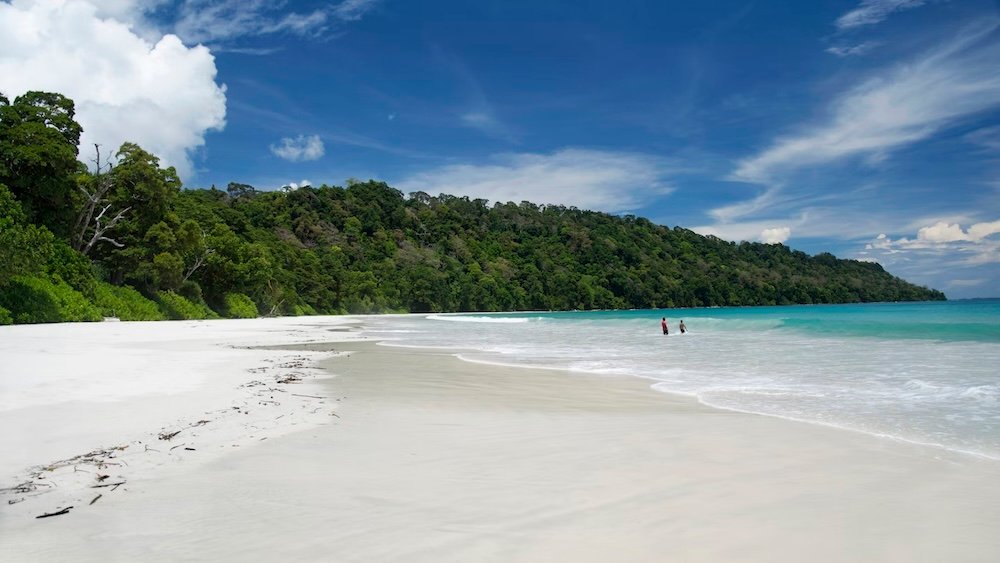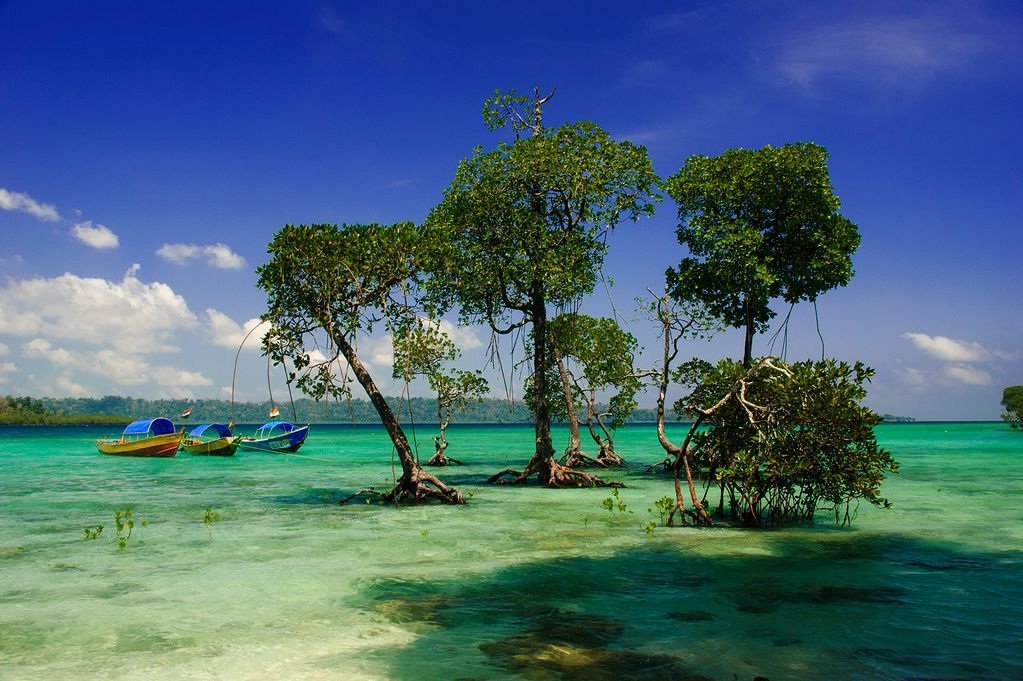
Nestled in the azure waters of the Bay of Bengal, the Andaman and Nicobar Islands are a breathtaking archipelago that serves as a bridge between India and Southeast Asia.
This cluster of over 572 islands, of which only around 38 are inhabited, offers an intriguing blend of breathtaking natural beauty and a rich historical tapestry.
The islands are not just a tropical paradise but also a melting pot of cultures, thanks to their strategic location along ancient maritime trade routes.
The Nicobar Islands, in particular, stand out with their lush tropical forests, vibrant coral reefs, and an astonishing diversity of marine life, making them a focal point for ecologists and travelers alike.
What sets these islands apart is not only their ecological diversity but also their cultural richness.
The indigenous tribes of the Nicobar Islands, with their unique way of life, have remained largely untouched by modern civilization, adding an air of mystery to this already captivating region.
As we dive into the lesser-known facts about these islands, we aim to explore both the enchanting natural wonders and the profound cultural heritage that the Nicobar Islands have to offer.
Each fact presented in this article promises to enhance your understanding of this secluded paradise, revealing why the Nicobar Islands are a jewel in the crown of the Indian Ocean.
1. Malay Origins of the Names Andaman and Nicobar
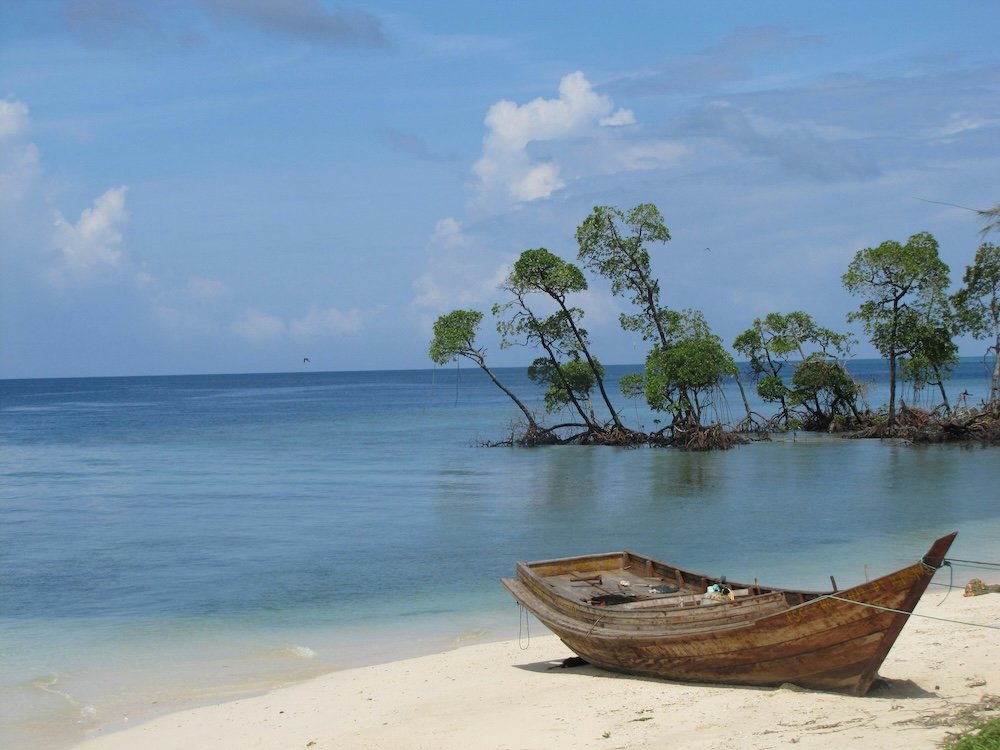
The enchanting names “Andaman” and “Nicobar” are deeply rooted in historical and linguistic significance, stemming from the ancient Malay language.
This connection highlights the archipelago’s early interactions with Southeast Asia. The term “Andaman” is believed to be derived from “Handuman,” named after the revered Hindu deity Hanuman.
This nomenclature reflects the influence of early Hindu traders who navigated these waters and left a lasting cultural imprint.
In contrast, “Nicobar” means “land of the naked people” in old Malay, pointing to the perceptions of the indigenous populations by early seafarers and explorers who encountered the local tribes, often astonished by their minimal attire.
This name provides a glimpse into the initial cultural exchanges and the striking impressions made by the islands on their visitors.
These Malay-derived names not only signify the historical and cultural exchanges between the Nicobar Islands and other civilizations but also emphasize the strategic significance of the islands as a vital maritime link between the Eastern and Western worlds.
Delving into the linguistic roots of the Nicobar Islands offers invaluable insights into the complex tapestry of cultural interactions that have shaped this unique region over centuries.
2. Linguistic Diversity: Dominant Languages on the Islands
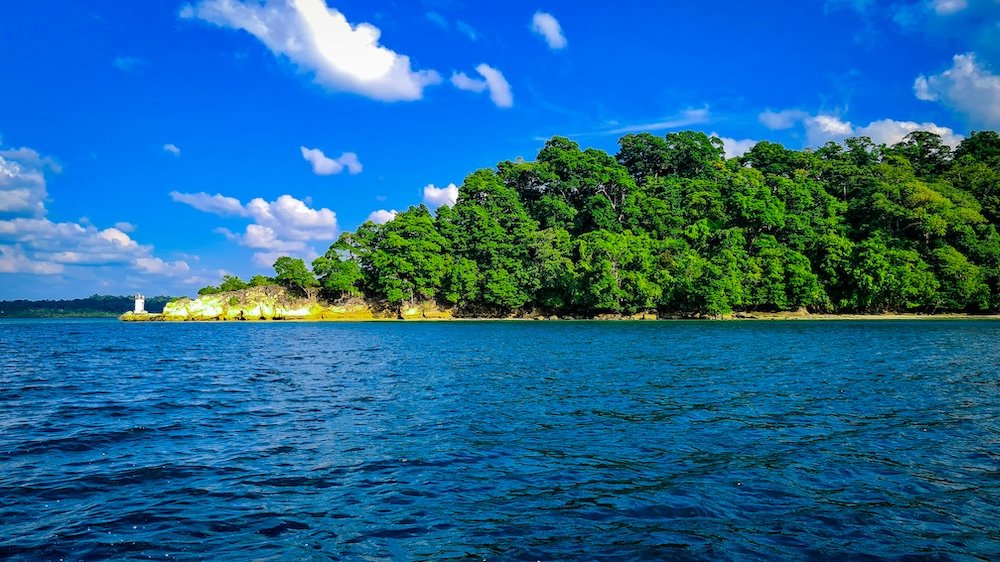
Contrary to what one might expect, the most widely spoken languages in the Andaman and Nicobar Islands are not the indigenous Andamanese or Nicobarese, but rather Hindi and Bengali.
This linguistic pattern is a result of extensive migration from the Indian mainland over several decades, which has brought a diverse mix of cultures and languages to the islands.
Hindi serves as a lingua franca among the settlers and the government administration, facilitating communication across the archipelago’s multi-ethnic population.
Bengali, on the other hand, is predominant among the settlers from West Bengal and Bangladesh, making up a significant portion of the islands’ demographic.
Tamil and Telugu are also spoken by smaller communities, reflecting the varied migration patterns.
This linguistic diversity is surprising given the isolated nature of the islands and the small population of the original Nicobarese and Andamanese speakers, whose languages are drastically different from any on the Indian mainland.
The indigenous languages include several distinct but endangered languages such as Onge, Jarawa, and Sentinelese, which are of great interest to linguists and anthropologists due to their unique phonetic and grammatical structures that are not found in any other languages in the world.
The unexpected tapestry of languages spoken on the Nicobar Islands not only underscores the complex cultural dynamics of migration and settlement but also highlights the challenges in preserving the linguistic heritage of the indigenous populations amidst the dominant languages brought by later settlers.
3. Isolated Tribes: The Untouched Cultures of Andaman and Nicobar
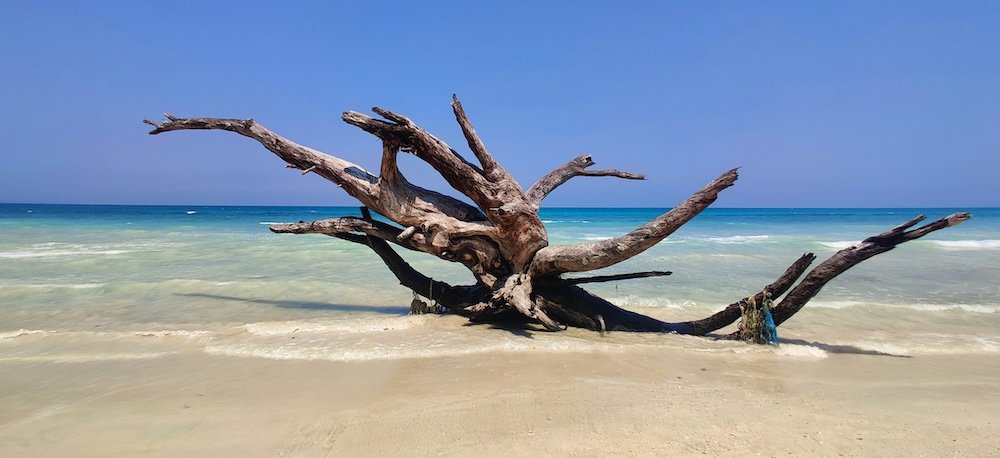
The Andaman and Nicobar Islands are home to some of the most isolated and enigmatic tribes in the world.
These indigenous groups, including the Sentinelese, the Jarawas, the Onge, and the Great Andamanese, have lived in these remote islands for thousands of years, with lifestyles that have remained largely unchanged over the centuries.
A significant aspect of their culture is their deliberate policy of isolation from the outside world, which they have maintained to protect their way of life and minimize external influences.
The Sentinelese tribe, residing on North Sentinel Island, is perhaps the most isolated of all, known for actively resisting contact with outsiders.
This tribe has remained virtually untouched by modern civilization, and their language, customs, and the exact population remain largely unknown.
The Indian government has recognized the vulnerability of these tribes, especially in terms of disease and cultural disruption, and has established laws that prohibit any interaction with the Sentinelese, including travel within a specified distance of North Sentinel Island.
The Jarawas and the Onges, while slightly more contacted than the Sentinelese, still retain a considerable degree of isolation.
The Jarawas only started to have limited and controlled contacts with the outside world in the late 20th century.
These contacts are heavily regulated by the Indian authorities to prevent exploitation and cultural contamination.
The Onge tribe, on the other hand, has had more interaction with non-indigenous people but remains wary of extensive external influence.
The policy of isolation adopted by these tribes is not merely a result of external enforcement but also a conscious choice made by the tribes themselves to preserve their cultural identity and autonomy.
The Nicobar Islands, thus, serve as a unique case study of how indigenous populations navigate the challenges posed by modernity while striving to retain their distinct cultural heritage and social structures.
The continued existence of these tribes offers invaluable insights into the resilience and adaptability of human societies under conditions of extreme isolation and environmental constraints.
4. Historical Occupation: Japanese Presence During WWII

During World War II, the strategic location of the Andaman and Nicobar Islands drew the attention of major powers, culminating in the Japanese occupation of the islands from 1942 to 1945.
This period left a significant mark on the islands, both in terms of physical infrastructure and the psychological impact on the local populace and prisoners of war who were detained there.
The Japanese initially received a warm welcome from some of the local Indian population, who saw the occupation as liberation from British colonial rule.
However, the situation soon deteriorated as the harsh realities of military occupation became apparent.
The Japanese administration imposed strict controls and carried out numerous atrocities, including forced labor, torture, and executions, which have left a lasting scar on the collective memory of the islanders.
One of the most notorious legacies of the Japanese occupation was the construction of the infamous Cellular Jail, or “Kaala Pani,” in Port Blair, which was used to detain and punish Indian freedom fighters.
The conditions in the jail were brutal, and many prisoners died due to torture or were executed. The jail stands today as a dark reminder of the oppressive history endured by the inhabitants during the occupation.
The Japanese also attempted to fortify the islands against possible Allied attacks, building bunkers and lookout posts, some of which still remain scattered across the islands.
These structures serve as silent witnesses to the intense battles and strategic maneuvers that took place in this remote part of the world during the global conflict.
The impact of the Japanese occupation on the Nicobar Islands is a complex legacy of both suffering and strategic significance during one of history’s most tumultuous periods.
It underscores the islands’ geopolitical importance and the profound effects of war on its diverse communities. This historical episode provides a crucial context for understanding the subsequent political and social developments in the islands post-World War II.
5. Katchal Island: Witness to the First Sunrise of the Millennium
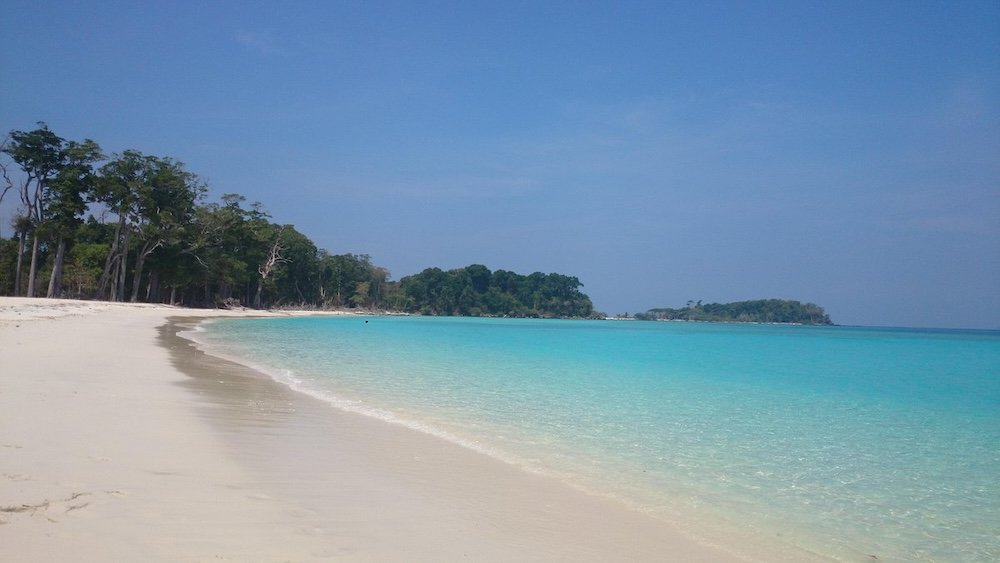
Katchal Island, a relatively obscure part of the Nicobar Islands, gained global attention as the herald of the new millennium.
This small island had the unique distinction of being one of the first places on Earth to witness the sunrise of January 1, 2000.
This extraordinary event catapulted Katchal Island into the limelight, making it a symbol of new beginnings and a point of curiosity for people around the world.
The first sunrise was not just a celestial occurrence but also a significant media event.
Numerous tourists, journalists, and photographers from across the globe converged on the island to capture this historic moment, eager to document the dawn of the 21st century from one of the most pristine locations on the planet.
The Indian government issued special permits for people wishing to experience this once-in-a-lifetime event on Katchal.
Despite the fleeting focus during the millennium celebration, Katchal Island remains a quiet, serene place, mostly untouched by the commercial tourism that marks many other historical sites.
Today, the island is known for its lush landscapes, rich biodiversity, and the peaceful coexistence of its small population, who live in harmony with nature.
This milestone event in the island’s history highlights the unique interplay between its geographical location and significant global events, making Katchal Island a notable, though often overlooked, gem in the archipelago of the Nicobar Islands.
6. Home to the World’s Largest Sea Turtles
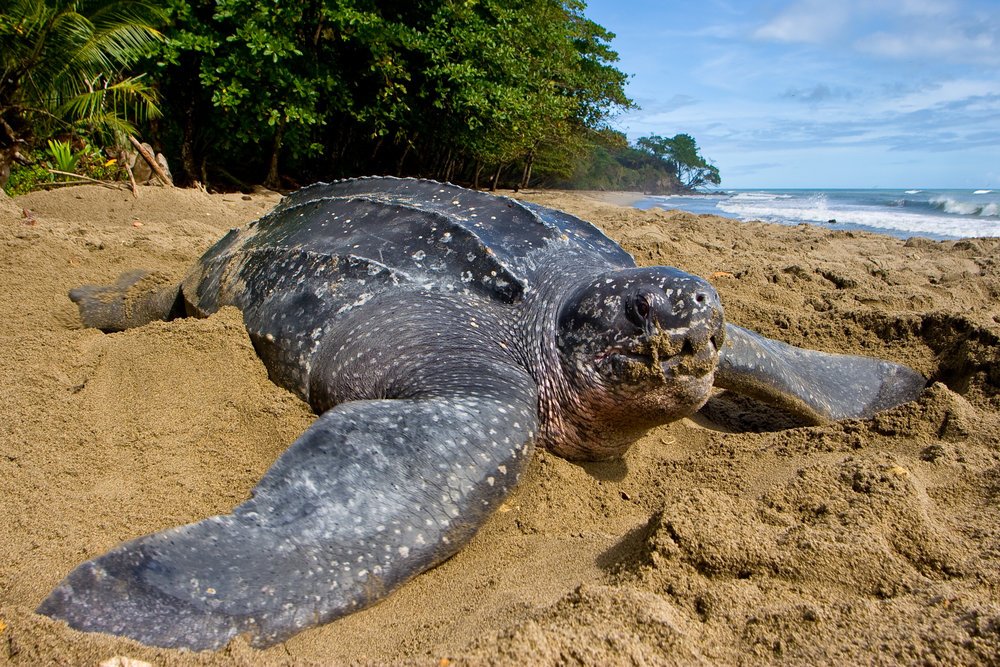
The Andaman and Nicobar Islands are blessed with an abundance of marine life, including the majestic leatherback sea turtles (Dermochelys coriacea), the largest of all sea turtle species.
These magnificent creatures are frequent visitors to the shores of the Nicobar Islands, where they come to nest and lay their eggs in the sandy beaches, creating one of the most spectacular natural spectacles in the region.
The nesting season typically begins in late December and continues until April, during which female leatherback turtles emerge from the depths of the ocean and crawl ashore under the cover of darkness to find a suitable nesting site.
Once a suitable location is found, the female digs a deep hole in the sand using her flippers and deposits her clutch of eggs, which can number up to 100 or more.
After covering the nest with sand, she returns to the sea, leaving the eggs to incubate under the warmth of the sun.
After a gestation period of about two months, the hatchlings emerge from their sandy nests and instinctively make their way towards the ocean, guided by the moonlight reflecting off the water.
This perilous journey is fraught with dangers, as the hatchlings must navigate past predators and obstacles to reach the safety of the open sea.
Only a small percentage of hatchlings will survive to adulthood, making each successful journey to the ocean a cause for celebration and awe.
The presence of these ancient mariners is a testament to the ecological richness and biodiversity of the Nicobar Islands, highlighting the importance of conservation efforts to protect their nesting grounds and ensure the survival of future generations.
By preserving these natural sanctuaries, we not only safeguard the habitats of these magnificent creatures but also contribute to the overall health and resilience of marine ecosystems in the region.
7. North Sentinel Island: Home to a Paleolithic Tribe
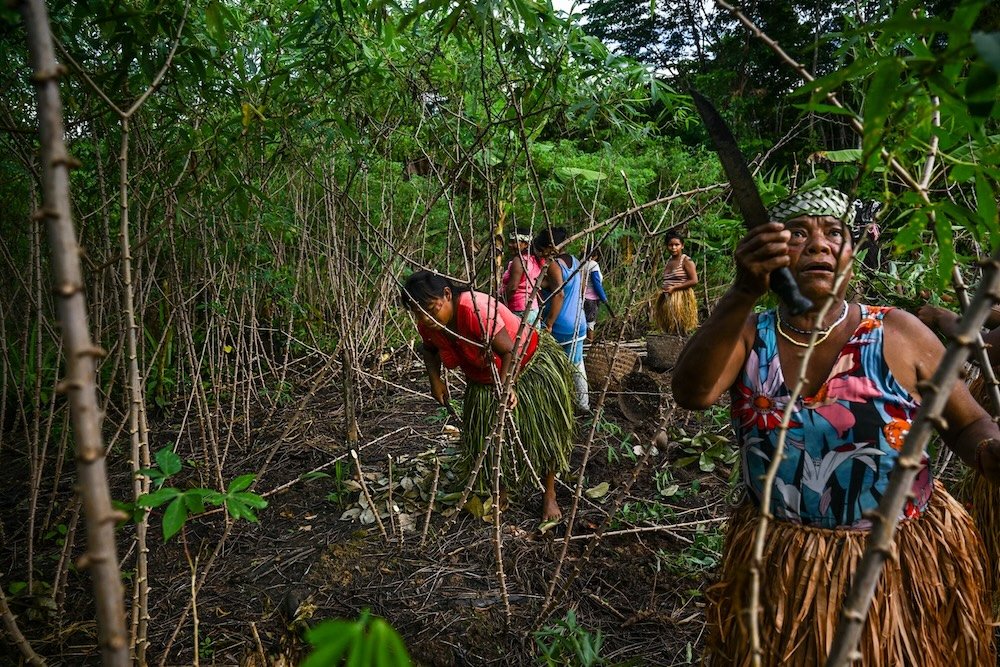
Nestled in the azure waters of the Bay of Bengal, North Sentinel Island stands as a testament to the resilience of indigenous cultures and the enduring mysteries of human civilization.
This remote island is home to the Sentinelese tribe, one of the last known groups of Paleolithic hunter-gatherers in the world.
What sets the Sentinelese apart is not only their isolation from the modern world but also their fierce resistance to any form of external contact.
The Sentinelese have inhabited North Sentinel Island for thousands of years, living a traditional lifestyle largely untouched by modern technology or outside influences.
They rely on hunting, fishing, and gathering for sustenance, using tools and techniques that have remained unchanged for generations.
Their language, customs, and social structures are unique and distinct, offering valuable insights into humanity’s distant past.
Despite occasional attempts at contact by outsiders over the centuries, the Sentinelese have consistently rejected any form of interaction, often responding with hostility and aggression to perceived intrusions into their territory.
This fierce determination to maintain their isolation has earned them a reputation as one of the most isolated and enigmatic tribes in the world.
In recent decades, the Indian government has recognized the importance of respecting the Sentinelese’s desire for isolation and has implemented strict policies to protect their territory from outside interference.
Access to North Sentinel Island is heavily restricted, with entry prohibited for both tourists and researchers.
This approach aims to safeguard the cultural integrity and physical well-being of the Sentinelese, while also preserving the island’s unique ecological balance.
The Sentinelese and their way of life serve as a poignant reminder of the diversity of human cultures and the importance of respecting indigenous peoples’ rights to self-determination and autonomy.
Their continued existence in the face of increasing pressures from the outside world is a testament to their resilience and adaptability, offering valuable lessons for conservation efforts and cultural preservation initiatives worldwide.
8. Dugong: The Gentle Sea Cow of Andaman
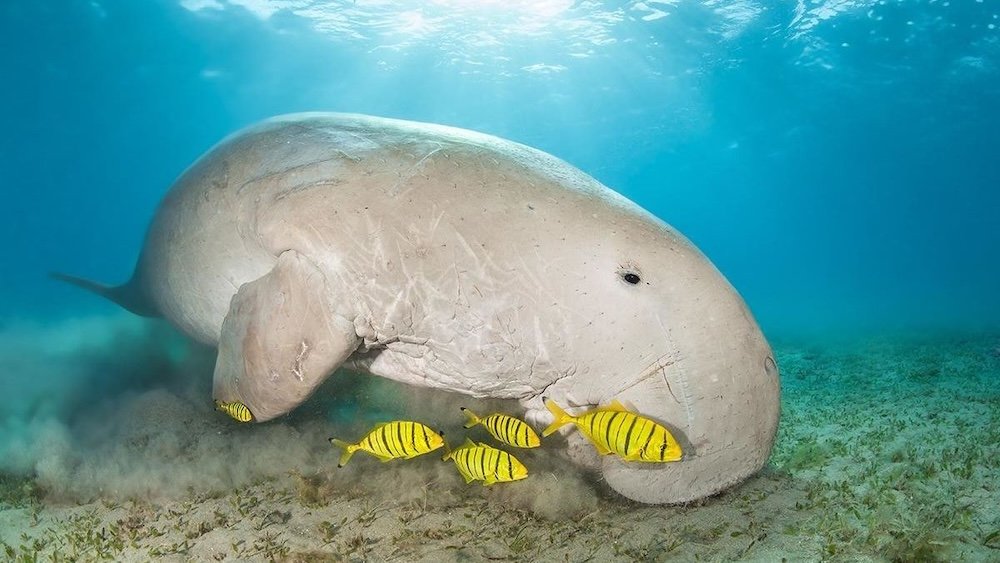
The Dugong (Dugong dugon), often referred to as the “gentle sea cow,” holds a special place in the ecological tapestry of the Andaman Islands.
As the state animal of the Andaman and Nicobar Islands, the Dugong serves as a symbol of the region’s rich marine biodiversity and its commitment to conservation efforts.
Dugongs are large marine mammals closely related to manatees and are known for their slow-moving and herbivorous nature.
They primarily feed on seagrass, using their sensitive snouts to uproot the vegetation from the ocean floor.
This diet plays a crucial role in maintaining the health of seagrass ecosystems, which provide essential habitat and food for a wide variety of marine life, including fish, crustaceans, and mollusks.
The waters surrounding the Andaman Islands are home to one of the largest populations of Dugongs in the Indian Ocean, making them a critical stronghold for the species’ survival.
However, Dugongs face numerous threats, including habitat loss, pollution, and accidental entanglement in fishing gear.
As a result, they are listed as vulnerable to extinction by the International Union for Conservation of Nature (IUCN).
Efforts to conserve the Dugong population in the Andaman Islands include the establishment of marine protected areas, habitat restoration projects, and community-based conservation initiatives.
These efforts aim to mitigate the human-induced pressures on Dugongs and their habitats while promoting sustainable fishing practices and raising awareness about the importance of preserving marine biodiversity.
By protecting the Dugong and its habitat, the Andaman and Nicobar Islands are not only safeguarding a flagship species but also preserving the health and resilience of entire marine ecosystems.
The Dugong serves as a powerful ambassador for ocean conservation, reminding us of the interconnectedness of all life forms and the importance of preserving the natural world for future generations.
9. Cellular Jail: Echoes of “Kaala Pani”
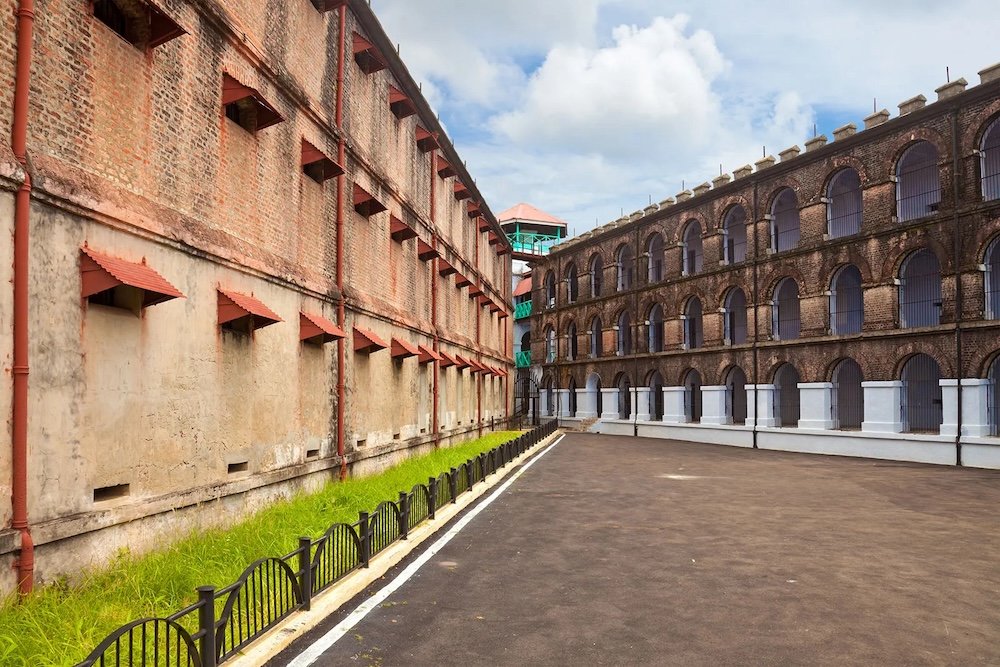
The Cellular Jail, located in Port Blair, stands as a somber reminder of India’s colonial past and the atrocities committed during the British rule.
Built in the late 19th century, the jail was originally intended to incarcerate political prisoners and rebels who opposed British rule in India.
However, it soon gained infamy as one of the most notorious prisons in the world, earning the nickname “Kaala Pani,” which translates to “Black Water,” due to its isolated location in the middle of the sea.
The construction of the Cellular Jail began in 1896 under the supervision of the British colonial administration.
The design of the jail was unique, consisting of seven wings radiating from a central watchtower, resembling the spokes of a wheel.
Each wing contained individual cells, which were small, cramped, and devoid of any amenities.
The harsh conditions and brutal treatment inflicted upon the inmates earned the jail a reputation for being a place of unparalleled suffering and despair.
Many of the prisoners held in the Cellular Jail were freedom fighters who participated in India’s struggle for independence.
They endured unimaginable hardships, including forced labor, solitary confinement, and physical torture.
Countless lives were lost within the confines of the jail, with inmates succumbing to disease, malnutrition, and despair.
Despite the oppressive regime imposed by the British authorities, the inmates of the Cellular Jail displayed remarkable resilience and solidarity.
They found ways to communicate with each other, using secret codes and tapping messages on the walls of their cells.
Some even managed to smuggle out letters detailing their experiences, which helped to expose the atrocities committed within the jail to the outside world.
The Cellular Jail remained operational until India gained independence in 1947. Today, it serves as a national memorial, dedicated to honoring the memory of those who suffered and sacrificed their lives for the cause of freedom.
Visiting the Cellular Jail is a poignant reminder of the struggles endured by India’s freedom fighters and the resilience of the human spirit in the face of oppression and injustice.
10. Ecological Conservation: Ban on Commercial Fishing

In recent years, the Andaman and Nicobar Islands have emerged as a focal point for ecological conservation efforts, with particular attention being paid to the preservation of marine biodiversity.
One significant measure implemented to protect the region’s fragile ecosystems is the ban on commercial fishing in the surrounding waters.
The ban on commercial fishing was introduced in response to growing concerns about the depletion of fish stocks and the degradation of marine habitats due to overfishing and unsustainable fishing practices.
The waters surrounding the Andaman and Nicobar Islands are home to a rich diversity of marine life, including coral reefs, mangrove forests, and endangered species such as sea turtles and dugongs.
These ecosystems play a crucial role in supporting local livelihoods, providing food security, and maintaining the overall health of the marine environment.
Commercial fishing activities, characterized by large-scale trawling operations and the use of destructive fishing methods such as bottom trawling, pose a significant threat to the region’s marine biodiversity.
Overfishing not only depletes fish populations but also disrupts the delicate balance of marine ecosystems, leading to cascading effects on other species and habitats.
In recognition of the need to protect the marine environment and promote sustainable fishing practices, the government of India imposed a ban on commercial fishing in the waters surrounding the Andaman and Nicobar Islands.
This measure aims to safeguard the region’s marine biodiversity, prevent further depletion of fish stocks, and promote the recovery of damaged ecosystems.
The ban on commercial fishing has been met with mixed reactions from local fishing communities, who rely on fishing for their livelihoods.
However, efforts are underway to provide alternative sources of income and support to affected communities, including the promotion of eco-tourism, sustainable aquaculture, and community-based fisheries management initiatives.
Overall, the ban on commercial fishing in the Andaman and Nicobar Islands represents a proactive and forward-thinking approach to ecological conservation.
By prioritizing the protection of marine biodiversity and promoting sustainable development practices, the region aims to ensure the long-term health and resilience of its precious natural resources for future generations.
11. Unique Flora: The Nicobar Breadfruit “Pandanus”
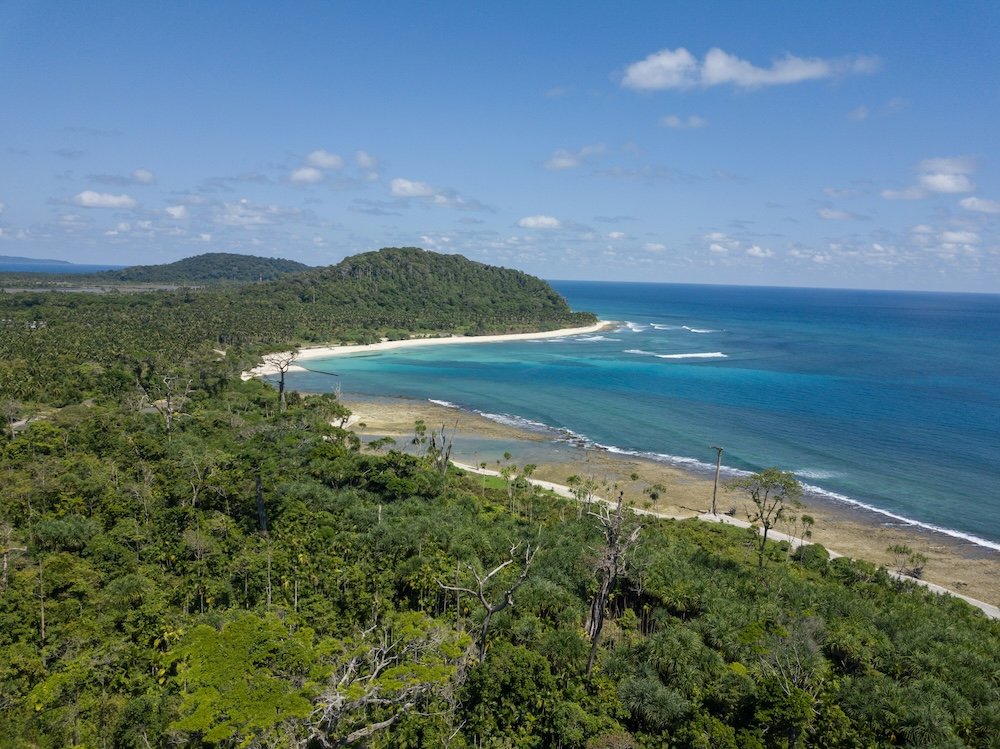
The Nicobar Islands boast a rich and diverse array of flora, much of which is unique to the region and found nowhere else on Earth.
One particularly fascinating plant species endemic to the Nicobar Islands is the Nicobar breadfruit, scientifically known as Pandanus nicobaricus.
The Nicobar breadfruit, or “Pandanus,” is a member of the Pandanus genus, which includes around 600 species of tropical shrubs and trees.
What sets the Nicobar breadfruit apart is its distinctive fruit, which resembles a large, round bread roll when ripe.
The fruit is highly prized by the indigenous Nicobarese people for its sweet, aromatic flesh, which can be eaten raw or cooked and is often used in traditional dishes and desserts.
In addition to its culinary uses, the Nicobar breadfruit also holds cultural and medicinal significance for the Nicobarese people, who have long relied on the plant for food, shelter, and traditional medicine.
The leaves of the Pandanus tree are used for weaving mats, baskets, and thatching roofs, while the roots and bark are believed to possess various medicinal properties.
Despite its cultural and ecological importance, the Nicobar breadfruit faces numerous threats to its survival, including habitat loss, deforestation, and climate change.
As a result, efforts are underway to conserve this rare and valuable species, including the establishment of protected areas, reforestation projects, and community-based conservation initiatives.
The Nicobar breadfruit serves as a poignant symbol of the unique biodiversity and cultural heritage of the Nicobar Islands.
By protecting this rare and valuable plant species, we not only safeguard the ecological integrity of the region but also preserve the rich cultural traditions and way of life of the Nicobarese people for future generations to enjoy.
12. Barren Island: The Active Volcano of India
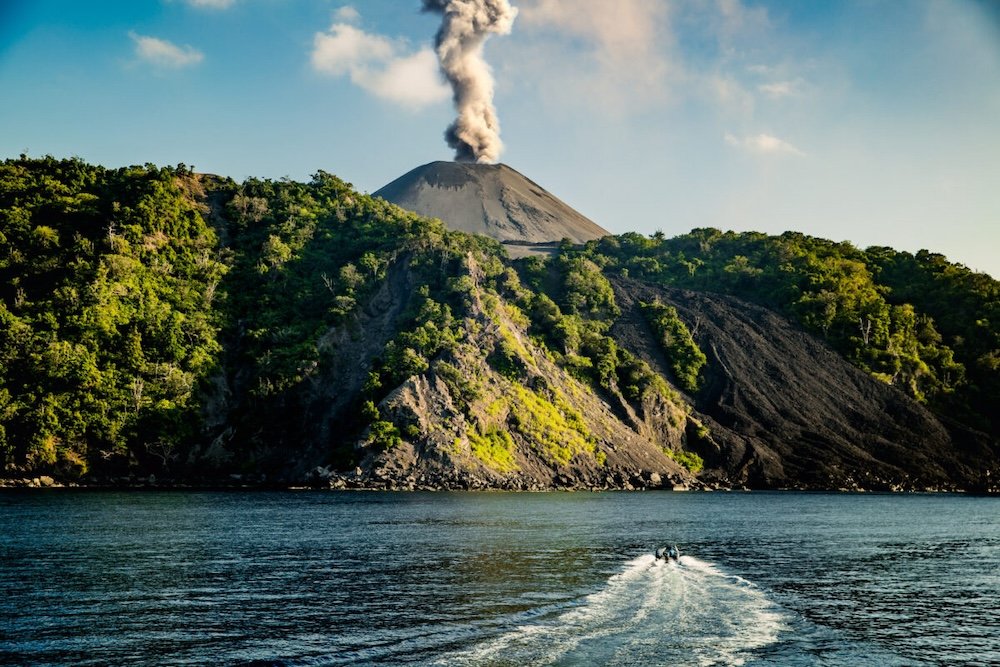
Nestled in the Andaman Sea, Barren Island stands as a stark reminder of the Earth’s tumultuous geological history.
As India’s only active volcano, Barren Island is a geological marvel and a site of immense scientific interest.
The volcano, which rises abruptly from the depths of the sea, is characterized by its barren, desolate landscape, devoid of vegetation and human habitation.
Despite its inhospitable appearance, Barren Island harbors a wealth of geological and biological diversity, making it a hotspot for research and exploration.
Barren Island’s volcanic activity is fueled by the subduction of the Indian Plate beneath the Burmese Plate, creating a hotspot of magma beneath the Earth’s crust.
Periodic eruptions occur, releasing molten lava, ash, and gases into the atmosphere.
These eruptions contribute to the island’s ever-changing landscape, sculpting rugged cliffs and lava flows that stretch into the sea.
The volcanic activity of Barren Island also has ecological implications, creating unique habitats for a variety of plant and animal species.
Despite the harsh conditions, life has found a way to thrive in this extreme environment, with colonies of seabirds, bats, and insects taking refuge on the island’s cliffs and crevices.
The ongoing monitoring of Barren Island’s volcanic activity is essential for understanding the processes that shape our planet and mitigating the risks posed by potential eruptions.
Scientists closely study the volcano’s seismic activity, gas emissions, and lava flows to better predict and prepare for future eruptions, ensuring the safety of nearby communities and ecosystems.
Barren Island stands as a testament to the dynamic forces that shape our planet and the resilience of life in the face of adversity.
As India’s only active volcano, it offers a glimpse into the Earth’s fiery depths and serves as a reminder of the awe-inspiring power of nature.
Conclusion
In this journey through the Andaman and Nicobar Islands, we have uncovered a wealth of fascinating facts and stories that highlight the region’s unique historical and natural significance.
From the Malay origins of the names “Andaman” and “Nicobar” to the untold tales of the tribes inhabiting these remote islands, each discovery has offered a glimpse into the rich tapestry of culture, history, and biodiversity that defines this captivating archipelago.
We have marveled at Katchal Island’s role in welcoming the new millennium and explored the ecological wonders of the region, from the nesting grounds of giant sea turtles to the rugged landscapes of Barren Island, India’s only active volcano.
We have reflected on the dark chapters of history, from the Japanese occupation during World War II to the haunting echoes of “Kaala Pani” within the walls of Cellular Jail.

FAQ’s About the Andaman and Nicobar Islands:
Why is Andaman & Nicobar so famous?
The Andaman and Nicobar Islands are renowned for their pristine beaches, crystal-clear waters, and vibrant marine life.
The islands offer a perfect blend of adventure and relaxation, with opportunities for snorkeling, scuba diving, trekking, and wildlife spotting.
Additionally, the rich cultural heritage and history, including the Cellular Jail and indigenous tribes, add to the islands’ allure.
What is the best time to visit Andaman?
The best time to visit the Andaman and Nicobar Islands is between October and May when the weather is pleasant and conducive to outdoor activities.
During these months, the seas are calm, making it ideal for water sports and beach activities.
However, it’s essential to avoid the monsoon season from June to September, as heavy rainfall and rough seas can disrupt travel plans and outdoor adventures.
What is special about Andaman?
The Andaman Islands are special for their stunning natural beauty, diverse marine life, and unique cultural heritage.
Visitors can explore pristine beaches, lush rainforests, and vibrant coral reefs teeming with marine creatures.
The islands are also home to indigenous tribes with fascinating traditions and lifestyles, adding to their cultural significance.
Is Andaman expensive?
While Andaman can be considered relatively expensive compared to mainland India, it offers a range of accommodation options to suit different budgets, from budget guesthouses to luxury resorts.
Additionally, the cost of activities such as water sports and tours can vary, but there are plenty of affordable options available for travelers.
Is Andaman safe to travel now?
Yes, Andaman is generally considered safe for travel.
The local authorities take measures to ensure the safety and security of visitors, and the islands have a low crime rate.
However, as with any travel destination, it’s essential to take common-sense precautions and be mindful of local customs and regulations.
What language is spoken in Andaman Nicobar?
The most widely spoken languages in the Andaman and Nicobar Islands are Hindi, Bengali, Tamil, and Telugu.
English is also commonly spoken, especially in tourist areas and among the local population who interact with visitors.
Additionally, the indigenous tribes have their own languages, although they are not widely spoken outside their communities.
Is Andaman and Nicobar like Maldives?
While both the Andaman and Nicobar Islands and the Maldives are tropical island destinations known for their stunning beaches and clear waters, they have distinct characteristics.
The Maldives is a nation consisting of over a thousand coral islands, known for its overwater bungalows and luxury resorts.
In contrast, the Andaman and Nicobar Islands are an Indian territory with a rich cultural heritage, diverse marine life, and lush rainforests.
Is Andaman owned by India?
Yes, the Andaman and Nicobar Islands are a union territory of India, governed by the central government.
They are located in the Bay of Bengal, approximately 1,200 kilometers from the Indian mainland.
The islands are administered by the Andaman and Nicobar Islands Administration, which oversees their governance, development, and tourism.
What country owns the Andaman Islands?
The Andaman Islands are owned and administered by India. They are a part of the Indian territory and fall under the jurisdiction of the Indian government.
The islands have a unique cultural and historical significance, shaped by centuries of colonial rule and indigenous heritage.
Today, they are an integral part of the Indian nation, contributing to its rich tapestry of diversity and natural beauty.
